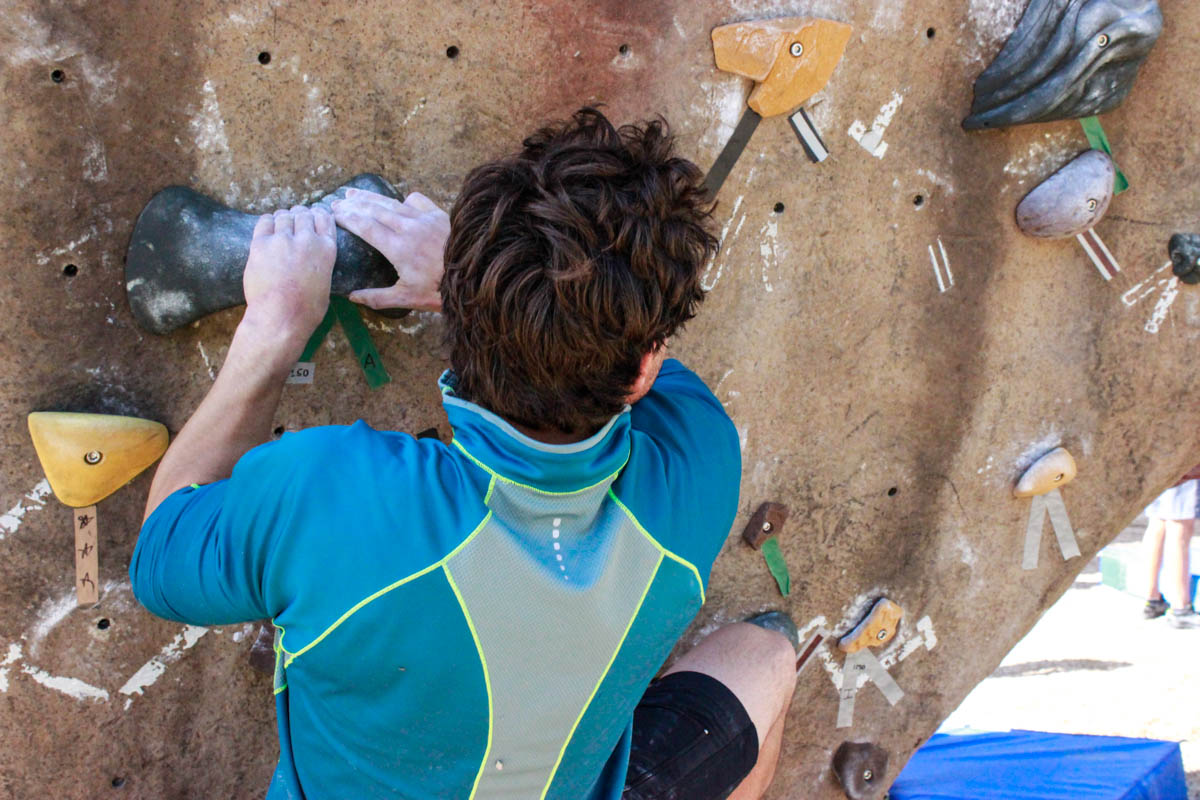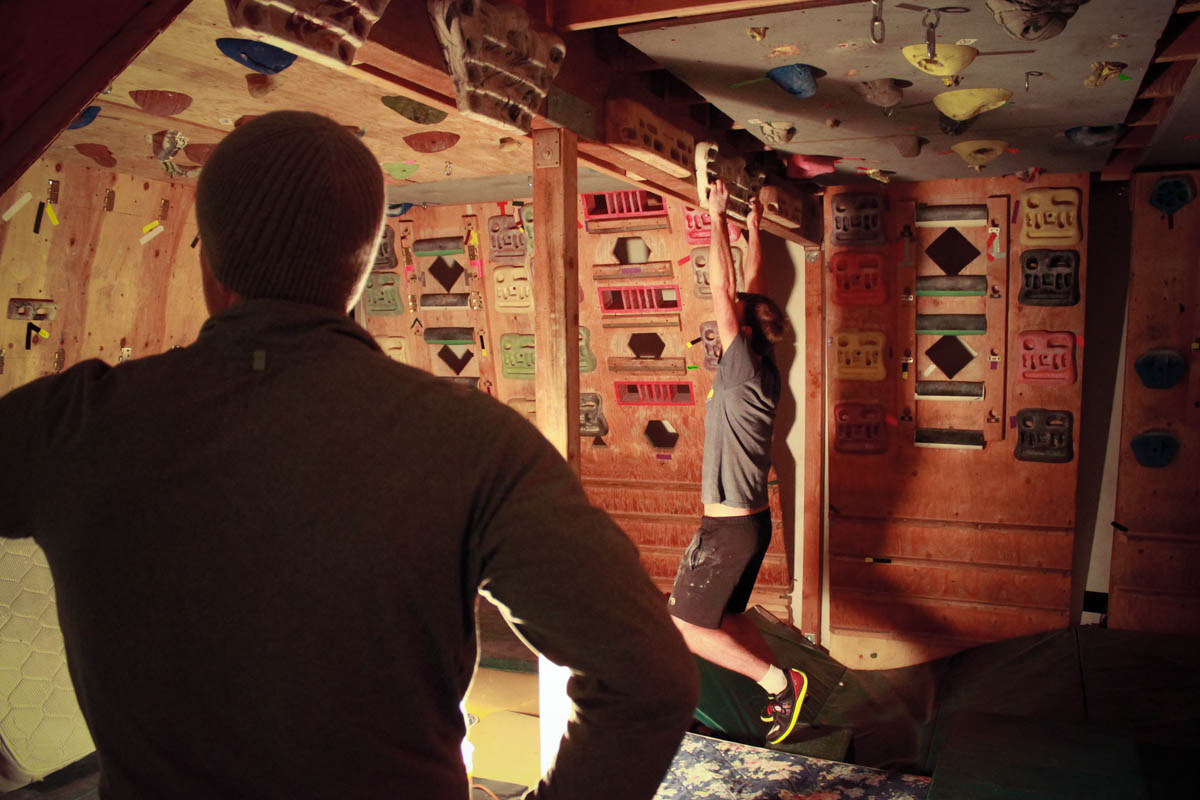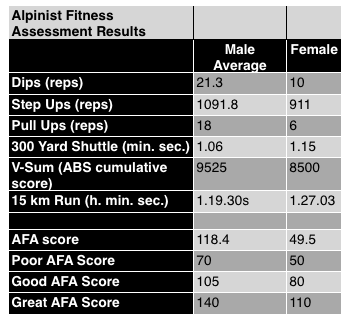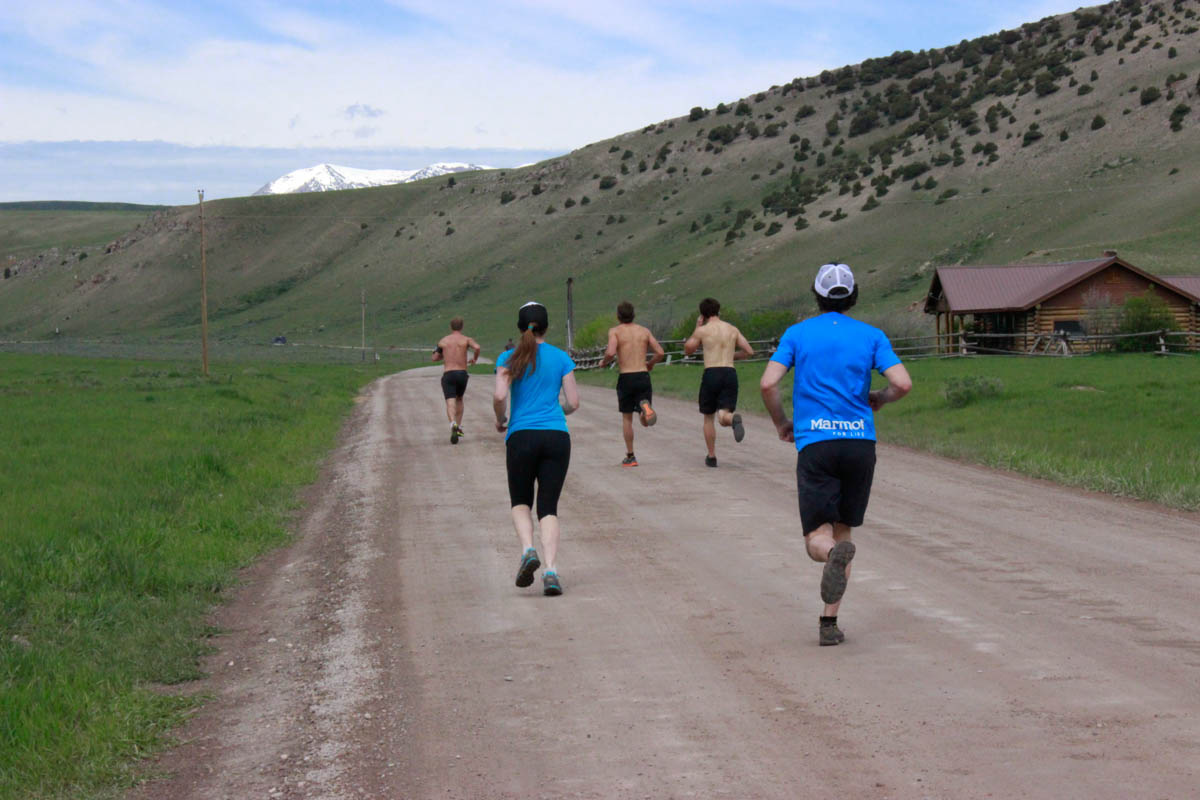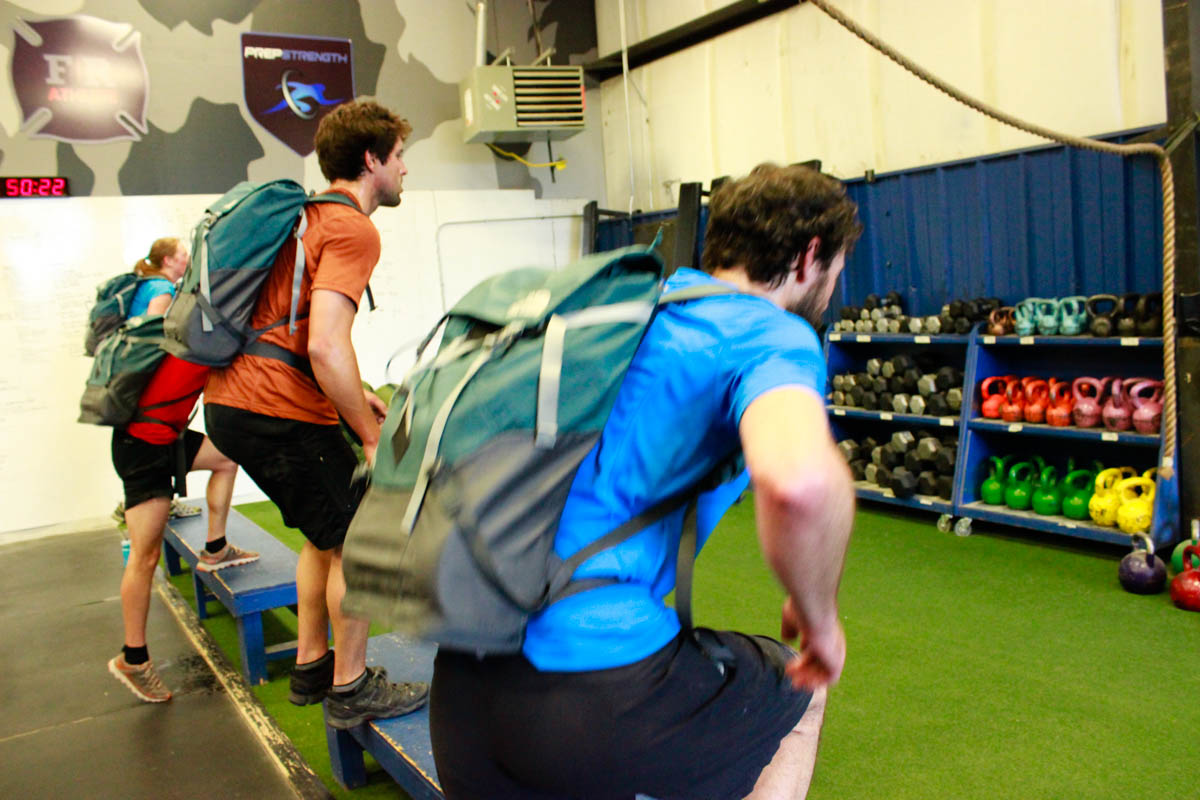By Dr. Kristen Ouellett and Rob Shaul
We developed The Alpinist Project as a physiological and fitness testing tool for high level and professional alpinists.
The tests occurred over two days, with the physiological testing day 1, and Alpinist Fitness Assessment on Day 2.
Five athletes were tested; four men and one woman. Two of the athletes are fully sponsored professional alpinists, three are high-level recreational alpinists. One athlete, a woman, came down sick the day of testing and didn’t participate.
Because we tested just one woman, the results below are presented as averages for the men and actual results for the singular female athlete.
Physiological Testing Take-Aways
- Very Lean. Males are considered very lean if they are 8-10% body fat and women are considered very lean if they are 16-18% body fat [1].
- Elite Grip Strength. The men and our female athlete had grip strength at the high end of normal for their age groups. Their grip strength was consistent with elite level rock climbers and in the lower range for elite Judo athletes of a similar body weight [2, 5, 6].
- Sub-Elite Fingerboard Hang. The dead hang was performed on the 2 cm hold of a fingerboard – a new assessment gaining traction in Europe. The averages for the top 10 male and female dead hang records are 124s and 102s respectively. Our athletes scored below this level, but these data are for the best in the world [7].
- Unimpressive Power. The athletes’ broad jump results were low.
- Moderate/High Aerobic Capacity. Males and our female have higher VO2 values than rock climbers, but lower VO2 values than elite endurance runners who are typically 70+ ml O2/kg/min. Male athletes had VO2 values very similar to professional field sport athletes like rugby league players. [4, 10, 11, 12].
- High Anaerobic Threshold. The athletes had anaerobic threshold values similar to high performance mountain bikers [12] at 80%+ of their respective VO2 max values.
Fitness Testing Take-Aways
- Upper Body Strength Imbalance. All of the athletes, except for 1 male (who was even) could push more than they could pull based a comparison of dip and pull up numbers, creating an imbalance that seems counterintuitive to climbing (we would think alpinists could pull more than push). On average the athletes could pull 82% as much as they could push.
- Excellent Uphill Hiking Under Load Fitness. Two of the athletes achieved maximal scores on the step ups (>1,100), while 1 achieved 1,000-1,049 steps and 2 others achieved 950-999 steps.
- Strong Climbing Ability. On the V-Sum, males averaged route difficulties of 1,191 (ABS equivalent) and our female averaged 1,063. The average difficulties relate to SCS scores of 5.12a and 5.10D respectively.
- Strong Running Ability. The top 3 men ran paces of 6m 46s, 7m 15s and 8m 7s minutes per mile for the 15km (9.3 mile) running test at the end of the assessment. These paces would be impressive if the run was the only test – but at the end of a 4-hour overall assessment which included 40 minutes of heavy step ups, this is especially noteworthy.
Discussion
We are on new ground here. As best we know, there has never been a focused physiological and fitness assessment of alpinists.
Our goal with this project was two-fold:
First – to get some baseline physiological data on these unique athletes using standard physiological assessments, and see how they compare to athletes in other sports.
Second – to validate the Alpinist Fitness Assessment as a strong assessment of the most important fitness attributes for alpinists – upper body strength, approach climbing ability, technical climbing proficiency and overall endurance, stamina and mental fitness.
Because of the loading, and multi-modal activities, Alpinism is not a strict single-mode endurance sport, similar to ultra running. As well, it is not a speed and power sport like hockey or football. Alpinism requires a wide variety of fitness attributes from endurance, to grip and upper body strength, to aerobic power.
The physiological assessment results confirmed this. Our Athletes had strong, but not elite VO2 max capacities, good, but not elite (like pure rock climbers) finger strength, and were lean, like pure endurance athletes.
The Alpinist Fitness Assessment (AFA) is a strong measure of the fitness demands for Alpinists based on the scores. One of the athletes tested scored at the highest “great” level. But the average male score was within the “good” range on the assessment.
Prior to the testing, we changed two events in the AFA to make it easier to administer, and more approachable for alpinists wanting to give it a go.
First, we replaced the sandbag getups with a single 300m shuttle sprint for time. The reason for this was many athletes who want to take the assessment remotely may not have a sandbag or have any experience with this exercise.
Second, we dropped the run distance at the end from 12 miles to 15 kilometers (9.3 miles). The purpose of the run in the assessment is two fold. First, to test raw endurance. Second to test overall stamina and mental fitness. Prior to beginning the run, the athletes had already been active and moving at high levels for approximately 2.5 hours, which includes 40 minutes of threshold step-ups under load. We felt 15 km was long enough to test both endurance and stamina.
Finally, anecdotally, the athletes who participated agreed the AFA was a strong assessment of their alpine fitness. “The variety was good,” said one athlete. “I was not pushed to the absolute limit, but close enough. The step ups were tough.”
“Brutal,” was how another athlete described it. “I did better than I thought I would as far as the cumulative output.”
Another athlete added that perhaps the only thing missing was the cumulative loading on the shoulders and core from all day of carrying a loaded pack. He suggested completing the final run in a weight vest may address this.
Questions,Comments, Feedback? Email coach@mtntactical.com
Sources
- Nieman, D.C., Fitness and sports medicine : a health-related approach. 3rd ed. 1995, Palo Alto, CA: Bull Pub. xxiii, 711 p.
- Massy-Westropp, N.M., et al., Hand Grip Strength: age and gender stratified normative data in a population-based study. BMC research notes, 2011. 4(1): p. 127.
- Grant, S., et al., Anthropometric, strength, endurance and flexibility characteristics of elite and recreational climbers. Journal of sports sciences, 1996. 14(4): p. 301-309.
- Watts, P.B., Physiology of difficult rock climbing. European journal of applied physiology, 2004. 91(4): p. 361-372.
- Franchini, E., et al., Physiological profiles of elite judo athletes. Sports Medicine, 2011. 41(2): p. 147-166.
- Leyk, D., et al., Hand-grip strength of young men, women and highly trained female athletes. European journal of applied physiology, 2007. 99(4): p. 415-421.
- Zlagboard – The door to your climbing world.
- Vescovi, J.D., T.M. Murray, and J.L. VanHeest, Positional performance profiling of elite ice hockey players. International journal of sports physiology and performance, 2006. 1(2): p. 84.
- Ransdell, L.B. and T. Murray, A physical profile of elite female ice hockey players from the USA. The Journal of Strength & Conditioning Research, 2011. 25(9): p. 2358-2363.
- Booth, J., et al., Energy cost of sport rock climbing in elite performers. British Journal of Sports Medicine, 1999. 33(1): p. 14-18.
- Baechle, T.R., R.W. Earle, and National Strength & Conditioning Association (U.S.), Essentials of strength training and conditioning. 2nd ed. 2000, Champaign, Ill.: Human Kinetics. xiii, 658 p.
- Tanner, R.K., C.J. Gore, and Australian Institute of Sport., Physiological tests for elite athletes. 2nd ed. 2013, Champaign, IL: Human Kinetics. xiv, 546 p.

